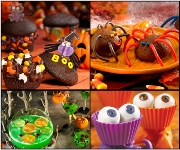Got Braces? We've Got Some New Year's Resolutions For You!
January 6th, 2022
 It's that time of year again; a time when we're thinking about those all too familiar New Year's resolutions. Promising to spend less, exercise more and clear the clutter are often at the top of our list, but this year the team at Bel Air Orthodontics has decided to keep our New Year's resolutions easy and entertaining. We've vowed to laugh more, smile often and have more fun. In the spirit of that fun, we came up with a few resolutions for our patients in orthodontic treatment. Tell us what you think, and share your own New Year's resolutions with us on our Facebook page!
It's that time of year again; a time when we're thinking about those all too familiar New Year's resolutions. Promising to spend less, exercise more and clear the clutter are often at the top of our list, but this year the team at Bel Air Orthodontics has decided to keep our New Year's resolutions easy and entertaining. We've vowed to laugh more, smile often and have more fun. In the spirit of that fun, we came up with a few resolutions for our patients in orthodontic treatment. Tell us what you think, and share your own New Year's resolutions with us on our Facebook page!
-
I will wear my elastics religiously.
-
I will not flick my elastics at my brother or sister!
-
I won't call my orthodontist during the Super Bowl with an emergency.
-
I will brush my teeth at least twice a day for no less than two minutes. (Five minutes would be better!)
-
I won't eat jolly ranchers or other sticky, chewy foods while I have braces.
-
I won't gross out my parents or friends by smiling with food in my braces.
-
I will not lie to my mom when she asks about my brushing.
-
I won't let the dog wear my retainer (or eat it for that matter!)
-
I will remember to wear a mouthguard when playing sports.
-
I will simply stop complaining about my braces!


 The busy holiday season is just around the corner, and so are the social activities and parties that go with it. It's also a time when Bel Air Orthodontics is busy replacing broken or lost retainers. Why you ask? There a number of factors, but it comes down to the fact that your retainer is spending too much time out of your mouth! Holiday fun brings a change in your daily routine, more meals with family and friends, and that usually means more opportunities to lose, break or forget your retainer.
The busy holiday season is just around the corner, and so are the social activities and parties that go with it. It's also a time when Bel Air Orthodontics is busy replacing broken or lost retainers. Why you ask? There a number of factors, but it comes down to the fact that your retainer is spending too much time out of your mouth! Holiday fun brings a change in your daily routine, more meals with family and friends, and that usually means more opportunities to lose, break or forget your retainer. Halloween is a fun time of year, but before you head out to trick-or-treat, Dr. Godwin would like to offer a few tips for keeping your braces healthy and happy. While Halloween treats are tempting, it's important to remember that many can cause havoc for trick-or-treaters with braces. Treats that are sticky, chewy, hard or crunchy can potentially cause damage to braces, clear aligners, and other orthodontic appliances. In addition to patient discomfort, a broken bracket or loose wire may prolong treatment and require additional appointments.
Halloween is a fun time of year, but before you head out to trick-or-treat, Dr. Godwin would like to offer a few tips for keeping your braces healthy and happy. While Halloween treats are tempting, it's important to remember that many can cause havoc for trick-or-treaters with braces. Treats that are sticky, chewy, hard or crunchy can potentially cause damage to braces, clear aligners, and other orthodontic appliances. In addition to patient discomfort, a broken bracket or loose wire may prolong treatment and require additional appointments.
